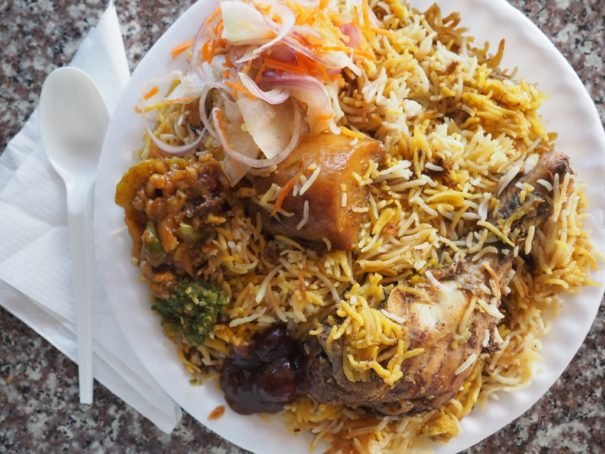
We Are Now Craving Marlin Biryani, Which Is Not an Easy Itch to Scratch

We Are Now Craving Marlin Biryani, Which Is Not an Easy Itch to Scratch
Biryani in Mauritius
“You like biryani? Spices, basmati rice, roast chicken. Only the best,” says Muslim Patene, the Bhandari, or biryani master, at his hawker stall in the back of the market in Flacq, a town on the northeast coast of Mauritius.
All over Mauritius people eat biryani: a rice dish made from long-
grained basmati rice, meat, potatoes, and spices. It was traditionally a Muslim dish created for celebrations, but its popularity transcends religious and ethnic boundaries in multicultural Mauritius.
But how did this South Indian dish reach this island? There’s a clue in the name for biryani chefs in Mauritius: Bhandari was the name for a cook in a crew of Lascars (South Asian sailors or soldiers) on British Navy ships in the colonial era, which stopped in Mauritius to bring indentured labor to work in sugar plantations.
The biryani’s origins are traced back to North India’s conquering Mughal emperors, who brought the dish to South India, along with their chefs. According to historians, it was originally conceived as a grand, luxurious dish for the thousands of guests at the royal court on special occasions. To make these huge quantities of biryani, Mughal chefs invented a special pot in which to cook it, called a deg. These conical pots have a large bottom and narrow neck, so that steam condenses and rolls down the curved slope back into the food, enriching it with flavor.
Muslim says it takes them seven or eight hours to prepare these huge degs of biryani. While everyone else is tucked in bed, the family starts cooking in the predawn darkness. Most Bhandaris across Mauritius serve chicken or beef biryani, but Muslim’s family also serve vegetarian and fish versions. I usually order marlin biryani with an icy bottle of Coke. Each time I return, the portions seem to get bigger as the crew get to know me as a regular.
Heaping piles of basmati rice infused with spices, whole pods of cardamom and splinters of cinnamon bark hide cuts of roast meat, along with the obligatory potato. Then of course there are the condiments: pickled radishes and onions, a dab of spicy green chili paste, homemade tomato chutney, and sweet tamarind sauce lumpy with black seeds. The flavors are both exciting and comforting.
Sitting at a plastic stool at one of the white linoleum tables behind Muslim’s cramped stall, Hindi pop music plays and local shoppers come and go in the market beyond. Sharing my table, everyone is digging in, indulging in this luxurious meal conceived by royalty, but enjoyed by the masses.